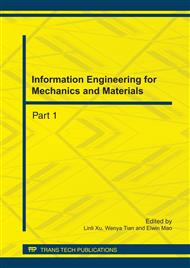[1]
J.P. Szybist, S.R. Kirby, A.L. Boehman. NOx emissions of alternative diesel fuels: A comparative analysis of bio-diesel and FT diesel. Energy and Fuels, 2005, Vol. 19: 1484-1492.
DOI: 10.1021/ef049702q
Google Scholar
[2]
M. Canakci, J.H. Van Gerpen. Comparison of engine performance and emissions for petroleum diesel fuel, Yellow Grease Biodiesel, and Soybean oil biodiesel. Transactions of ASAE, 2003, Vol. 46(4): 937-944.
DOI: 10.13031/2013.13948
Google Scholar
[3]
H.S. Yucesu, T. Topgul, C. Cinar and M. Okur, Effect of ethanol–gasoline blends on engine performance and exhaust emissions in different compression ratios, Applied Thermal Engineering 26 (2006), p.2272–2278.
DOI: 10.1016/j.applthermaleng.2006.03.006
Google Scholar
[4]
F. Yuksel and B. Yuksel, The use of ethanol–gasoline blends as a fuel in an SI engine, Renewable Energy 29 (7) (2004), p.1181–1191.
DOI: 10.1016/j.renene.2003.11.012
Google Scholar
[5]
Li, X., Qiao, X., Zhang, L., Fang, J., Huang, Z., and Xia, H., Combustion and emission characteristics of a two-stroke diesel engine operating on alcohol. Renewable Energy, (2005) 30: 2075-(2084).
DOI: 10.1016/j.renene.2004.05.014
Google Scholar
[6]
Satge de Caro, P. Mouloungui, E. Vaitilingom, G. Berge, J. C. Interest of Combining an Additive with Diesel-Ethanol Blends for Use in Diesel Engines. Fuel 2001, 80, pp.565-574.
DOI: 10.1016/s0016-2361(00)00117-4
Google Scholar
[7]
A. Chotwichien , A. Luengnaruemitchai,S. Jai-In. Utilization of palm oil alkyl esters as an additive in ethanol–diesel and butanol–diesel blends. Fuel,88 (2009):1618–1624.
DOI: 10.1016/j.fuel.2009.02.047
Google Scholar
[8]
Xing-Cai L, Jian-Guang Y, Wu-Gao Z, Zhen H. Effect of cetane number improver on heat release rate and emissions of high speed diesel engine fueled with ethanol-diesel blend fuel. Fuel 2004; 83: 2013-20.
DOI: 10.1016/j.fuel.2004.05.003
Google Scholar
[9]
Ivanov V.M., Nefedov P.I. Experimental investigation of the combustion process in natural and emulsified fuels. NASATech. Transal. TIF-258, (1965).
Google Scholar
[10]
Fu W. B., Hou Y. H., Wang L. and, Ma F. H., A unified model for the micro-explosion of emulsified droplet of oil and water, Fuel Proceeding Technology, 79, 107-119, (2002).
DOI: 10.1016/s0378-3820(02)00106-6
Google Scholar
[11]
T. Kadota, H. Tanaka, D. Segawa, S. Nakaya, H. Yamasaki. Microexplosion of an emulsion droplet during Leidenfrost burning. Proceedings of the Combustion institute, 2007: 2125-2131.
DOI: 10.1016/j.proci.2006.07.001
Google Scholar
[12]
C. F. Lee, K. T. Wang, W. L. Cheng. Atomization Characteristics of Multi Component Bio-fuel Systems under Micro-explosion Conditions. SAE Paper, 2008-01-0937.
DOI: 10.4271/2008-01-0937
Google Scholar


